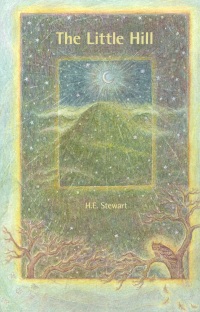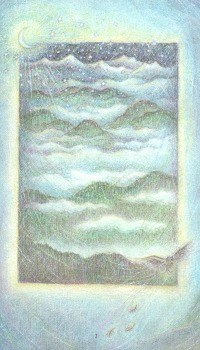| ________________
CM . . .
. Volume XIX Number 32. . . .April 19, 2013
excerpt:
The Little Hill follows the changes that a small hillside experiences over time. The changes are not just confined to the passages of the seasons, as dramatically told at the start of the book, but to the changes over millennia, as well. Once immersed in the utopia of cheerful birds, carefree mammals, and lush trees and flowers, the future does not bode well for the little hill once the Europeans arrive. Logging eventually destroys all of the resident trees, followed by the complete destruction of the hill itself, making way for a modern house. Lest the book leave the reader utterly depressed from the negative consequences of European settlement in North America, there is hope when a family that treats gardening as a serious hobby moves into the house. The reader is then left with the declaration that, "if we are to live life fully, we must love the earth that gives life to all." Suggested activities ("Nature Notes") at the end, such as the suggestion to "close your eyes and pretend that you have never seen a tree before”, complete the experience.
The text, itself, is very descriptive, yet it is lacking in the verve and je ne sais quoi necessary to capture the attention of the publisher’s listed age range. The Little Hill is not a very compelling character - in fact, there is no "character" development, sparking little sympathy or understanding that would have made this narrative shine. And, for a hill purportedly so beloved by animals, surely one of these critters could have been developed into a character. Compelling characterization is really a requirement for drawing in readers of this age group. Perhaps the illustrations are the redeeming quality, although even they do not seem age-appropriate. The emphasis on muted greens and blues make the graphics seem dim. There is a real need for books of this "nature," but authors must find a way to make them less preachy, more accurate factually, less cliché, and, perhaps most importantly, fun for children to read and listen to - characteristics that are not present in this book. Not recommended. Roxy Garstad is a librarian at MacEwan University in Edmonton, AB. Along with her MLIS, she holds a Bachelor of Science degree.
To comment
on this title or this review, send mail to cm@umanitoba.ca.
Copyright © the Manitoba Library Association. Reproduction for personal
use is permitted only if this copyright notice is maintained. Any
other reproduction is prohibited without permission.
NEXT REVIEW |
TABLE OF CONTENTS FOR THIS ISSUE
- April 19, 2013.
AUTHORS |
TITLES |
MEDIA REVIEWS |
PROFILES |
BACK ISSUES |
SEARCH |
CMARCHIVE |
HOME |

 While one cannot argue with the directive to nurture nature, there are a few stylistic and content problems that interfere with this most noble message. A prime example concerns the statement that "over time native people came to these lands. As was their way, they did not alter the landscape." However, anthropological and oral histories prove that Aboriginal people altered their landscape a great deal through activities such as burning. It is not accurate or helpful to view First Nations people as "ecological Indians." Similarly, the concession that the settled Europeans were doing right by Nature through their love of gardening does not quite jive, either. Cultivation of genetically modified seeds and the preservation and stewardship of natural species are two quite different activities. These criticisms are not to nitpick, but rather to point out that juvenile books on nature and science must contain accurate facts.
While one cannot argue with the directive to nurture nature, there are a few stylistic and content problems that interfere with this most noble message. A prime example concerns the statement that "over time native people came to these lands. As was their way, they did not alter the landscape." However, anthropological and oral histories prove that Aboriginal people altered their landscape a great deal through activities such as burning. It is not accurate or helpful to view First Nations people as "ecological Indians." Similarly, the concession that the settled Europeans were doing right by Nature through their love of gardening does not quite jive, either. Cultivation of genetically modified seeds and the preservation and stewardship of natural species are two quite different activities. These criticisms are not to nitpick, but rather to point out that juvenile books on nature and science must contain accurate facts.